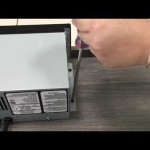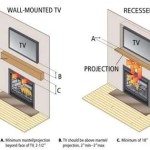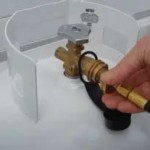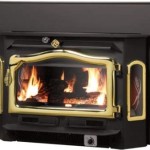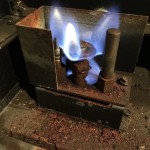How To Replace a Gas Fireplace Fan
A gas fireplace provides supplemental heating and aesthetic appeal to a home. A key component for efficient heat distribution is the blower fan. Over time, the fan may wear out, become noisy, or cease functioning altogether. Replacing a gas fireplace fan is a task that a homeowner with moderate DIY skills can undertake, provided safety precautions are followed and the correct replacement part is obtained. This article outlines the steps involved in replacing a gas fireplace fan.
Before commencing any work on a gas fireplace, safety is paramount. The gas supply must be completely shut off at the main valve to prevent any accidental leaks. This valve is typically located outside the fireplace, often near the gas meter. After shutting off the gas supply, allow the fireplace to cool completely. Working on a hot fireplace can lead to burns. Disconnecting the electrical power to the fireplace is also crucial. This can be achieved by flipping the corresponding breaker in the home's electrical panel. Verify that the power is off using a non-contact voltage tester. Maintaining a safe working environment is essential throughout the entire replacement process.
Identifying the Correct Replacement Fan
Finding the correct replacement fan is a critical step. A fan that is incompatible with the fireplace may not fit properly, may not operate efficiently, or could potentially damage the fireplace. The first step is to locate the model number of the fireplace. This information is usually found on a metal plate attached to the fireplace itself, often hidden behind the lower access panel or inside the firebox. Once the model number is obtained, consult the fireplace manufacturer's website or contact their customer support to identify the specific fan designed for that model. Many online retailers also offer search tools based on fireplace model numbers.
When selecting a replacement fan, consider the specifications of the original fan. These specifications may include the voltage, amperage, CFM (cubic feet per minute), and physical dimensions. Ensuring that the replacement fan matches these specifications guarantees proper functionality and avoids potential electrical issues. If an exact match cannot be found, consulting with a fireplace specialist or HVAC technician is recommended to identify a suitable alternative. Purchasing a high-quality replacement fan from a reputable supplier is a worthwhile investment, as it can extend the lifespan of the fan and ensure reliable performance.
Furthermore, examine the wiring harness and connectors on the original fan. Replacement fans often come with a standard wiring configuration, but some fireplaces may use a proprietary connection. If the wiring connections differ, an adapter may be required. Alternatively, splicing the wires from the old fan to the new fan may be necessary, but this should only be done by someone comfortable with electrical wiring and should be done with appropriate connectors and heat shrink tubing.
Removing the Old Fan
Once the replacement fan has been acquired, the next step is to remove the old fan from the fireplace. Start by accessing the fan compartment. This usually involves removing an access panel located at the bottom or back of the fireplace. The panel may be secured with screws or clips, depending on the fireplace design. Refer to the fireplace's user manual for specific instructions on accessing the fan compartment.
After accessing the fan compartment, carefully disconnect the electrical wiring connected to the old fan. Many fans have plug-in connectors, making disconnection relatively simple. If the wires are directly connected, take note of the wire colors and their corresponding terminals. A photograph or diagram can be helpful to ensure correct reconnection later. Use wire strippers to disconnect the wires from the old fan and the existing wire nuts.
Next, remove the old fan from its mounting brackets. The fan may be secured with screws, bolts, or clips. Loosen and remove these fasteners to free the fan. In some cases, the fan may be mounted on a sliding track. Carefully slide the fan off the track to remove it. Exercise caution to avoid damaging any other components inside the fireplace while removing the old fan. Once the fan is free, inspect the surrounding area for any debris or dust. Clean the area with a vacuum cleaner or brush to improve airflow for the new fan.
Installing the New Fan
With the old fan removed and the area cleaned, the new fan can be installed. First, position the new fan within the mounting brackets. Secure the fan using the screws, bolts, or clips that were removed from the old fan. Ensure that the fan is securely mounted and will not vibrate or move during operation. If the original hardware is damaged or worn, replace it with new hardware of the same size and type.
Next, reconnect the electrical wiring to the new fan. Match the wire colors and terminals according to the notes or diagram taken during the removal of the old fan. If the replacement fan has different wiring connections, use an adapter or splice the wires using appropriate connectors and heat shrink tubing. Ensure that all connections are secure and insulated to prevent short circuits. After the wiring is connected, check for any loose wires or exposed metal. Secure any loose wires with wire ties to prevent them from interfering with the fan's operation.
Finally, reinstall the access panel that was removed earlier. Secure the panel with the screws or clips, ensuring that it is properly aligned and flush with the surrounding surface. Double-check all connections and components to ensure that everything is properly installed before restoring power to the fireplace. Once the access panel is secured, restore electrical power to the fireplace by flipping the breaker back on. Turn on the gas supply at the main valve and test the new fan's operation. Listen for any unusual noises or vibrations. If the fan operates smoothly and efficiently, the replacement is complete. If there are any issues, re-examine the connections and consult a fireplace specialist if necessary. Regular maintenance, such as cleaning the fan blades, can extend the fan's lifespan and maintain optimal performance.

Noisy Gas Fireplace Blower Here S How To Replace It Diy

Fbk 250 Fireplace Blower Kit Installation

How To Choose And Install A Gas Fireplace Blower Kit

How To Replace Your Rsf Fireplace Blower Fan

Gas Fireplace Blower Fan Installation

Fireplace Efficiency Blowers And Why You Should Have One

Fireplace Blower Fans What You Need For Heat Full Service Chimney

Fireplace Blowers Explained How Fans Work Regency

How To Make A Escea Dx1500 Installation Quiet

How To Choose And Install A Gas Fireplace Blower Kit
Related Posts

